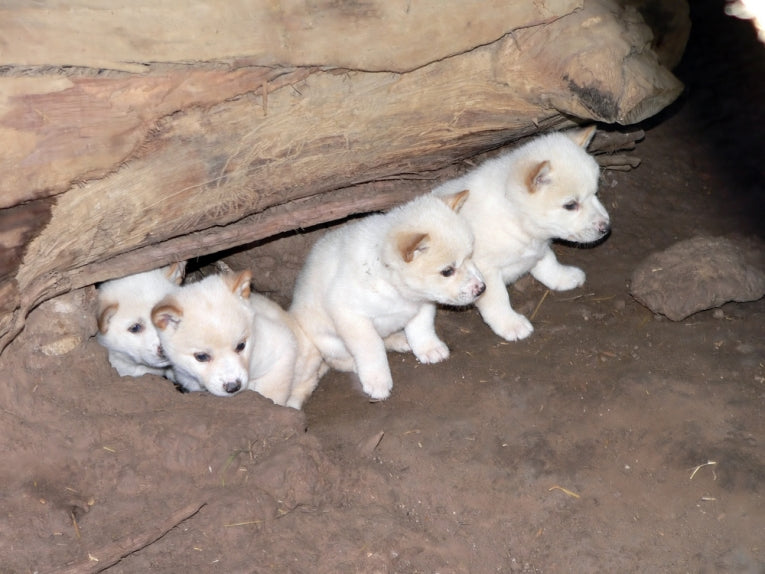When you look at dog species throughout the world, there are some entrancing and interesting species, endemic to each continent, apart from Antarctica. The Asian dhole, the South American bush dog, Speothus, the African painted or Cape hunting dog, and the rest! The wolf-dog complex that produced our canine domestics also produced an Australasian and Asian sub-species, Canis lupus dingo, associated with the early human ingress (by the Koori) to the region around 5000 years ago and the continent of Australia itself.
Its nearest relatives seem to be the domestic pariah dogs of SE Asia, but without more genetic investigation, it is almost impossible to work out many of the Canis lupus familiaris variants! What is established is that probably the purest forms of dingo exist not in Australia but in the uninhabited forests of Thailand
Government control of dingoes over the years has been pretty terrifying. From "shooting the bastards," Australia has now progressed to using a lethal toxin, sometimes from the air called 1080. Biological control seems much more feasible, as poison is always liable to interfere with the ecosystem is terrible apparently-unconnected ways. It's also necessary to finally come to terms with the "Fraser Island conundrum."
Dingoes on this island are pretty much pure-bred, as dogs aren't allowed. Elsewhere dingoes only persist in the north and central parts of the continent. Wild dogs make up the rest of the mix, often having interbred with dingoes in the past. Australians recognise a native mammal like themselves, but tend to get confused with the various dog populations. Now The Ochre Project is aiming to protect pet dingoes, wild dingoes and others from indiscriminate killing. They themselves are a biological control over cats and foxes as has been proved in research we have reported before (Same picture, apologies).
No foxes exist in the north where dingoes still remain in a natural state. Controlling them is a matter for Australians alone. Wild, feral, dogs could be limited, as they have to be elsewhere in the world, but it's obviously a ticklish problem to separate what is a pest and what is a native, well-adapted top predator, needed for conservation of habitats.
The native placental of Australia will not survive with all of this interbreeding and killing. All that will be left is a feral dog population, which is of little use to anybody. Reactions are different from the US with their wolf hatred and love (Both sides of the fence are more clarified over there). Action now, on Fraser Island, and hopefully in carefully managed situations elsewhere, will preserve the native fauna generally in a way that the continent has been unable to do before.
The Ochre Project seems to be making the point that careful governance would already be pushing ---– save the dingo!










